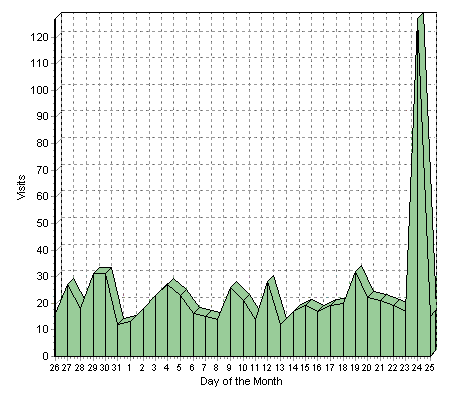
Spike Seen in Transplants for Fatty Liver Disease
Spike Seen in Transplants for Fatty Liver Disease
By Charles Bankhead, Staff Writer, MedPage Today
Published: December 20, 2011
Reviewed by Robert Jasmer, MD; Associate Clinical Professor of Medicine, University of California, San Francisco and
Dorothy Caputo, MA, RN, BC-ADM, CDE, Nurse Planner
The frequency of liver transplantation for nonalcoholic steatohepatitis (NASH) increased six-fold over the past 15 years.
Post-transplant survival of NASH patients proved superior to that of all but four other types of recipients: primary biliary cirrhosis, primary sclerosing cholangitis, autoimmune hepatitis, and hepatitis B infection (HBV).
The frequency of liver transplantation for nonalcoholic steatohepatitis (NASH) increased six-fold over the past 15 years and recipients live longer compared with other liver transplant patients, a review of a national database showed.
Consistent with the obesity epidemic, the proportion of liver transplants involving patients with nonalcoholic steatohepatitis (NASH) increased from 1.2% from 1997 to 2003 to 7.4% in 2010, making NASH the fourth most common reason for liver transplantation.
Post-transplant survival of NASH patients proved superior to that of all but four other types of recipients: primary biliary cirrhosis, primary sclerosing cholangitis, autoimmune hepatitis, and hepatitis B infection (HBV), according to an article published online in Liver Transplantation.
The authors pointed to a reduced mortality from graft failure as a possible explanation for the improved survival of NASH patients after liver transplantation.
“Only 8.6% of deaths in patients with NASH were caused by graft failure compared with 16.6% of deaths in patients without NASH,” wrote Anita Afzali, MD, of the University of Washington in Seattle, and co-authors. “This is likely due to lower rates of recurrence of NASH and cirrhosis in transplanted livers as compared to recurrence of other diseases such as hepatitis C and hepatitis B.”
Detailed screening of transplantation candidates for cardiovascular disease might have excluded more high-risk patients with NASH, they added.
Nonalcoholic fatty liver disease (NAFLD) is the most common liver disease in the U.S., affecting almost 30% of the population. In 15% to 20% of cases, NAFLD progresses to NASH, according to the authors.
Central obesity and insulin resistance are the most common factors in NAFLD and NASH. Given the growing prevalence of obesity, as many as 25 million Americans could have NASH, which can progress to cirrhosis, hepatocellular carcinoma, and liver failure.
Some authorities have predicted that NASH will become the leading indication for liver transplantation within 10 to 20 years, surpassing the current leader, hepatitis C virus (HCV) infection.
Patients with NAFLD/NASH have an increased risk of cardiovascular morbidity and mortality because of associated risk factors. The heightened cardiovascular risk could adversely affect post-transplantation survival. However, NASH patients might also have improved survival because of a reduced risk of disease recurrence, the authors continued.
No studies have examined recent national trends in liver transplantation for NASH-related reasons. To address the gap in data, Afzali and colleagues analyzed data from the United Network for Organ Sharing (UNOS).
The investigators sought out all adults who had first-time cadaveric liver transplantations in the U.S. from 1997 to 2010. The analysis yielded 53,738 patients, of whom 1,810 had NASH as the indication for transplantation.
During 1997 to 2003, NASH accounted for 1.2% of all liver transplantations. Thereafter, the proportion of transplantations involving NASH increased until NASH represented the fourth most common reason, trailing only hepatocellular carcinoma (HCC), HCV, and alcohol-related liver disease.
From 2008 to 2010, the proportion of liver transplantations involving patients with NASH exceeded those involving patients with cryptogenic cirrhosis. The proportion of liver transplants performed for NASH was 7.4% in 2010.
The proportion of transplantations for NASH and cryptogenic cirrhosis combined increased steadily after 2003, suggesting the increase in NASH-related indications was not a reflection of “diagnostic transfer,” the authors noted.
Patients with NASH or cryptogenic cirrhosis tended to be older, white, female, obese, and diabetic, as compared with transplant recipients with other types of liver disease. Other clinical and laboratory characteristics were similar for patients with and without NASH or cryptogenic cirrhosis, as were donor characteristics.
As compared with liver recipients with other types of liver disease, those with NASH or cryptogenic cirrhosis did not have an increased mortality (HR 0.94 for NASH, HR 0.97 for cryptogenic cirrhosis). Nor did they have increased risk of graft failure (HR 0.89 for NASH and HR 0.95 for cryptogenic cirrhosis).
Adjustment for donor characteristics alone had little impact on survival or graft failure. Adjustment for donor and recipient characteristics resulted in significantly reduced risks of death and graft failure among patients with NASH and cryptogenic cirrhosis:
NASH death: adjusted HR 0.75, 95% CI 0.66 to 0.85
NASH graft failure: adjusted HR 0.76, 95% CI 0.68 to 0.85
Cryptogenic cirrhosis death: adjusted HR 0.86, 95% CI 0.80 to 0.93
Cryptogenic cirrhosis graft failure: adjusted HR 0.90, 95% CI 0.84 to 0.96
The results did not change significantly in a separate analysis of the years 2004 to 2010.
Patients with NASH or cryptogenic cirrhosis had a one-year survival of 87.6%, three-year survival of 82.2%, and five-year survival of 76.7%. The survival was superior to that of patients with HCC, HCV, alcoholic liver disease, acute hepatic necrosis, hemochromatosis, and cryptogenic liver disease.
“Our study demonstrates that post-transplantation survival in patients with NASH is excellent and comparable to patients with all other liver diseases combined,” the authors wrote in conclusion. “Post-transplantation survival in patients with NASH is, in fact, superior to the post-transplantation survival of patients with other common indications for transplantation.”
A study limitation was that the diagnosis of liver disease in the UNOS database was based on reporting by the transplantation center so the accuracy of the data could not be confirmed. Also, reported causes of death may have been inaccurate.
“Our study suggests that patients with NASH-related cirrhosis should continue to be considered as potentially good candidates for liver transplantation and will likely account for an increasingly prominent proportion of liver transplantations in the United States,” they added.